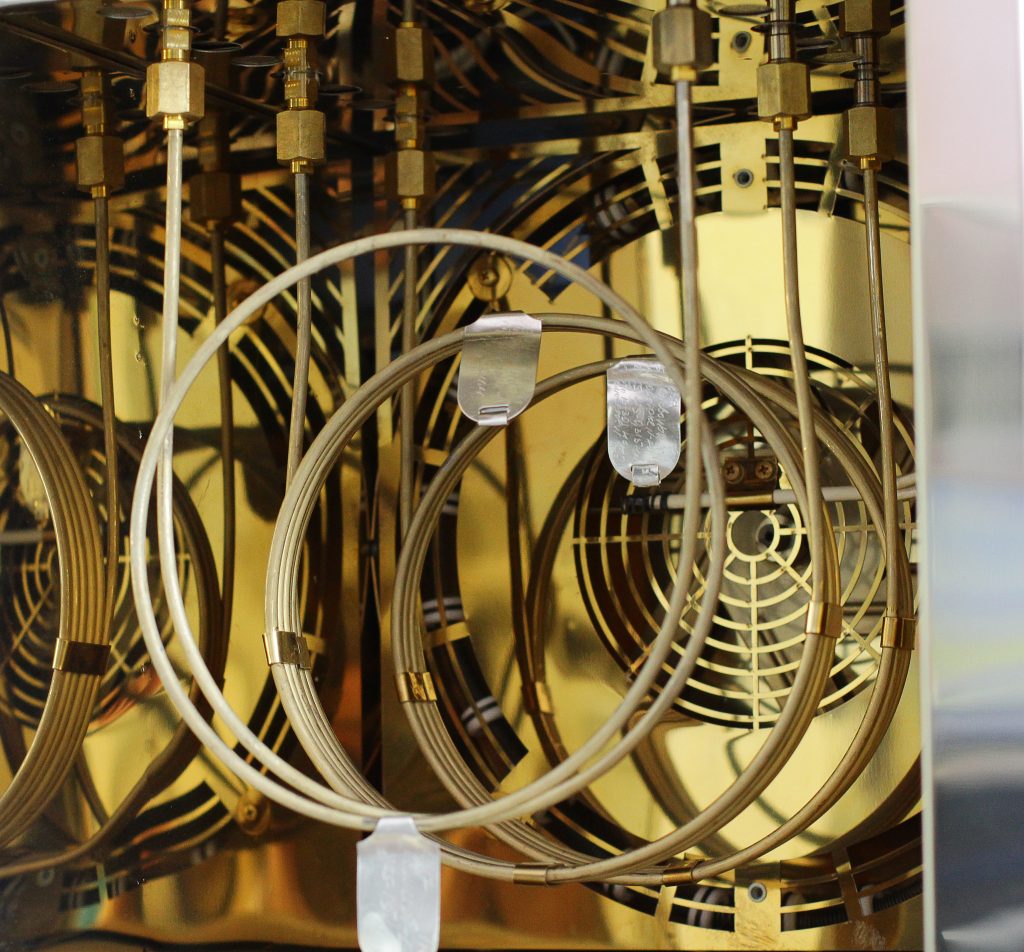For over 40 years, Butterworth Laboratories has provided independent, contract analytical services to the global pharmaceutical and related industries.
The Heart and the Achilles Heel of Gas Chromatography
2 February 2023
It was 1991 and I had arrived at Berridge Environmental Laboratories in Chelmsford, hot off the train from Edinburgh where I had just completed a 5-year joint honours degree. As shared in my last Blog, I was being mentored by Dennis, a semi-retired elderly gentleman with a shock of white hair and asbestos fingers from all his years of handling hot GC components. I was soon to learn that Dennis always passed on his knowledge of the art with a memorable statement or catchphrase which aided learning.
I remember the first time that Dennis was showing me the various components of a GC and how to install a capillary column in the GC oven. First of all, he used his magnifying loupe to ensure that the ends of the column were precisely square cut and free from any contamination. After putting nut and ferrule onto each end of the column he then wiped clean the column ends with an IPA-wetted tissue.
As Dennis demonstrated installing the column into injector and detector inlets he said “Frank, good chromatography is all about the Heart and the Achilles Heel”. “The column is the Heart of the chromatograph, the most important component, because it is where the chromatography actually happens, and if there are problems with the separation, then most of the time this is where you will find the problem”. “However, always remember that the Achilles Heel of the GC is the injector!” He then assured me that if the column is in good condition, installed correctly, and there are still chromatography problems, then 90% of the time the problem will be related to the injector.
He gave the following examples:
- The wrong type of liner was being used.
- The method injection volume is too large or the expansion co-efficient of the injection solvent is large (especially for water) and when vapourised in the hot injector, exceeds the liner volume which can cause flash-back up the carrier gas line.
- The way the liner has been packed with quartz wool is at fault.
- The liner is contaminated or poorly silanised giving rise to active sites and detrimental adsorption effects seen especially for polar sample components.
Dennis believed that quartz liners were best and that these should be silanised before and after packing if quartz wool was required. Over the last 30 years, I have found that advice given by Denis has been proved to be good time and time again and I now share this same advice when training new analysts myself.
Frank Judge – Consultant Chemist- Chromatography at Butterworth Laboratories Ltd